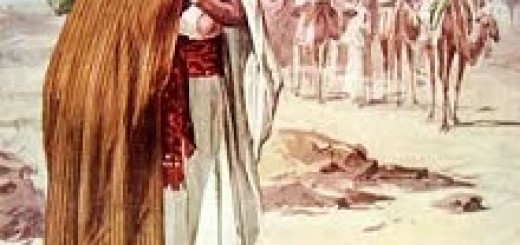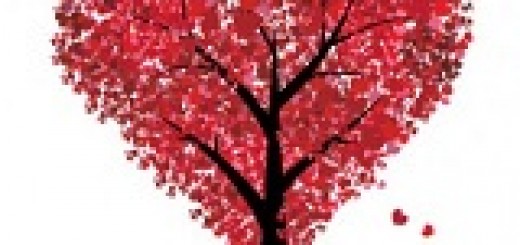By Rabbi David Sterne
This week, we will focus on a difficult topic that arises from our weekly Torah portion (Chukat) and we will use the opportunity to delve into a bit of metaphysics to help us understand our purpose in this world.
It is well-known that there are four “worlds,” or realms of kedusha (“holiness”) that were created during the six days of creation (beginning of Breishit, or “Genesis”). We inhabit the lowest of those four worlds, the physical world of Asiya, in which there is more concealment than revelation of Godliness. When we pray, we seek to achieve higher spiritual levels that elevate ourselves and our prayers to the worlds of yetzira (general templates of existence known as “angels”), bria (“potential existence”) and finally to the world of Atzilut (“emanations,” or sephirot). It is less known that corresponding to these four “worlds,” are another four realms of evil and concealment that were created. Man has a choice to either uplift himself and his portion in the world, or to allow himself to be dragged down to the lower realms that hide and conceal Godliness. While it is true that both the created worlds of ABY”A (Atzilut-bira-yetzira and asiya) and the lower realms (called klipah or “shell”) hide and conceal Godliness, there is a difference. The four worlds of ABY”A have the potential for spiritual elevation and refinement. The lower realms, however do not carry the potential for elevation. Rather, if we get ensnared in these realms, they draw us down, spiritually and physically.
In addition, the lower realms of klipah sub-divide into two categories. One, called klipat noga (“shining klipah,” since the sparks of holiness are close to the surface), is composed of mixed good and evil. By our actions, we may succeed in extracting and elevating whatever good happens to be present in klipat noga. We do this by studying Torah and fulfilling mitzvoth. The other category is called the “three completely impure klipot (gimmel klipot hatemeot), which we are unable to elevate. And since we are unable to elevate these realms of spiritual impurity, the Torah tells us to avoid these realms entirely. If we ignore the Torah and do any of the things that the Torah warns us not to do, we will become trapped in these impure realms and it then becomes difficult to extract ourselves (to do teshuva). So, while klipat noga is “available” for purification and transformation, the three lower realms of totally impure klipa are “off limits,” and we are advised to avoid them completely. Our involvement will only “suck us in” and we are unable to elevate these realms.
With this introduction, we may now explore one of the topics in this week’s Torah portion – the “red heifer.” The red heifer is full of contradictions; its purpose is to purify the impurity that accompanies death, which is the strongest impurity mentioned in the Torah. The purification process takes place outside of the Temple compound, as one person sprinkles the ashes of a red heifer (combined with other elements) on another person who is in need of purification before he ascends to the Temple. And then, paradoxically, the person who does the sprinkling becomes unclean, while the subject who received the sprinkling is now considered free of the spiritual contamination associated with death.
Our sixteenth century sage, the Megaleh Amukot (R’ Nosson Nata Shapira of Cracow) tells us something interesting. He says that the red heifer is for the purpose of uplifting and purifying the realm of klipat noga. As mentioned, klipat noga is mixed good and bad, and the job of a Jew is uplift the holy sparks that are trapped in noga and return them to their source in holiness. According to R’ Shapira, the impurity of death is associated with klipat noga and therefore we have the ability to uplift it utilizing the ashes of the red heifer. R’ Shapira also mentions that during one of the blessings of the shemonah esreh, “And let the informers have no hope,” we allude to both classes of impurity. Regarding the three totally impure realms, we say, “may You quickly uproot, break and crush,” but regarding klipat noga, we say the word, “subdue.” Thus, we must totally eradicate the three totally impure realms, while the fourth realm is up for “subduing,” but not for destruction, since we are capable of extracting the holy sparks that are entrapped there.
Interestingly, the Alter Rebbe, founder of the Chabad movement says quite the opposite of R’ Shapira. In Tanya (Igerest Hakodesh 28), the Alter Rebbe asks why the purification process of the red heifer takes place “outside” of the Temple compound, rather than inside? Elsewhere, the red heifer is compared to a sin-offering, so why does it not take place inside the Temple compound where the other sin-offerings are sacrificed? In answer, the Alter Rebbe suggests that since the purpose of the red heifer is to alleviate the impurity of death, it has the power to uplift even sparks which have fallen into the furthest klippot – into the three totally impure klipot. So, in this regard, the Alter Rebbe disagrees with R’ Shapira as to the purifying power of the red heifer. While R’ Shapira holds that its purpose is to uplift and purify the sparks from klipat noga, the Alter Rebbe suggests that the red heifer has far more power, and can actually uplift holiness from the deepest darkest realms of the three totally impure klipot. And in fact, that, says the Alter Rebbe is why the purification ceremony took place outside of the Temple compound – to tell you that even that which is completely “out of bounds” of anything holy may be uplifted by the red heifer.
One thing that we might learn from the red heifer, is that while reaching out to other Jews to draw them closer to their roots and heritage, we should not be afraid of sullying ourselves in the process. In order to help one who is not on your level, we sometimes must stoop in order to raise him up. But the lesson of the red heifer is that our descent is a necessary step, for the purpose of upraising another Jew. And in the end, we ourselves also receive a spiritual uplift, because “all of us are in this together.”
Rabbi David Sterne is a prolific author on chassidic thought and has translated many of its seminal works. He resides in Israel and is the director of Jerusalem Connection. To read more of his work and to purchase his books visit http://www.jewishspiritualbook






















